Australia is a big country: the world’s sixth largest country. It stretches 4100km from east to west and 3180km from north to south, and that’s not even including Tasmania, the largest island to the south. The only way to truly see Australia is by driving, and by allowing a lot of time.
To travel around Australia takes a minimum of 3 months, or at least 6 months if you want to take a more leisurely pace. Back in 2009, I travelled around Australia for over 5 months, including a whole month stopped in one place, and not making it to Queensland or Tasmania. Later in 2021, I spent 5 months travelling around Australia, this time including Queensland but skipping most of Victoria and NSW.
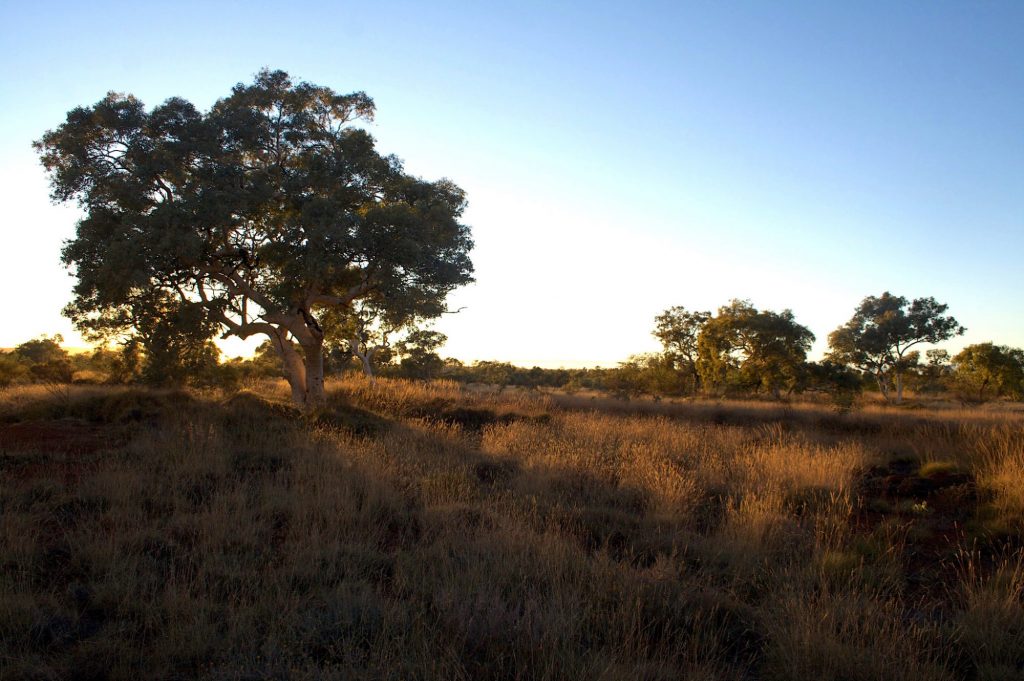
It’s almost possible to do such a trip solely staying in hotels along the way. And there are plenty of excellent but expensive hotels and other options (such as luxury campsites) in many places around Australia.
But that would exclude staying in many of Australia’s beautiful national parks, and to be honest some of the hotels in more remote or rural places aren’t that great. Not to mention that with Australian hotel prices that option would be quite expensive, especially for 3 to 6 months on end.
A more do-able option is to either drive a caravan, campervan or camp. Out of those three options, the cheapest is camping, as you can drive a smaller, more economical car, and skip on the larger cost to refuel a campervan or a car towing a caravan. (Petrol and diesel prices in regional areas of Australia are higher than in capital cities, and in remote areas they’re more expensive again.)
So, if you’re wanting to camp your way around Australia, how to do it? (Also, even if you’re taking a shorter camping trip in Australia, I’ve included lots of tips for camping in Australia.)
Check out my guide to travelling around Australia with your dog if the four-legged members of your family will be joining you!
Camping Around Australia Guide: Time of Year
As Australia is such a big country, the climate differs greatly based on what part of the country you are pitching your tent in. Your trip will benefit from carefully considering what time of the year to undertake your trip, or the order in which you will visit different parts of the country.
When to Visit Northern Australia
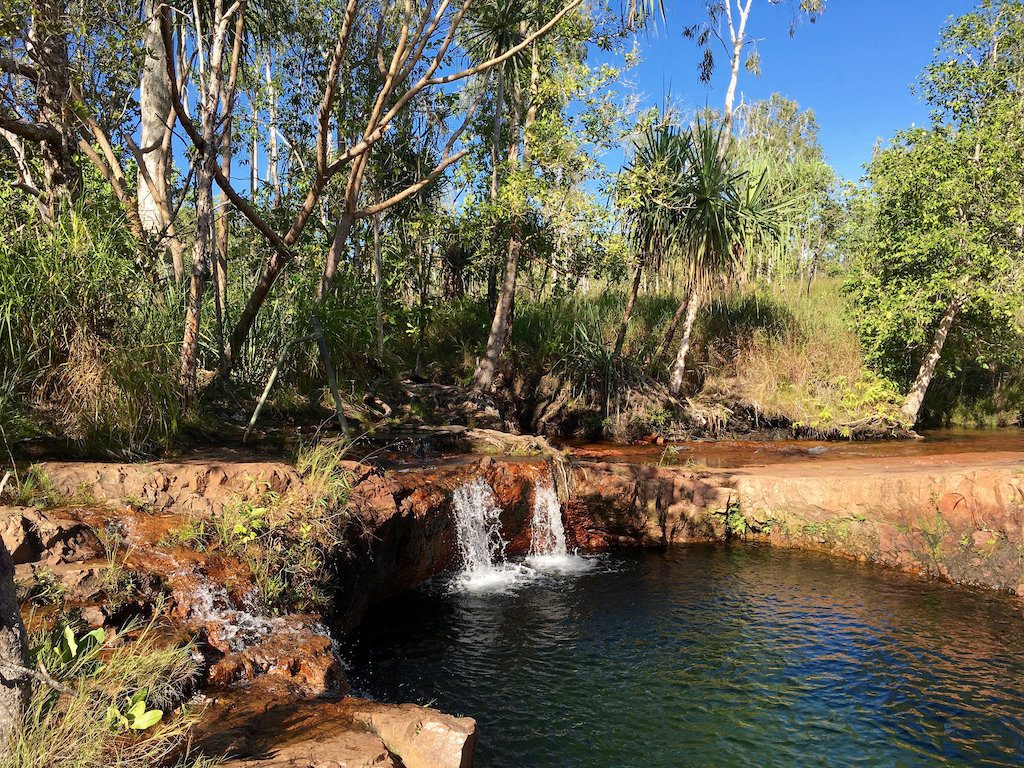
When visiting the northern half of Australia and wanting to camp, you should avoid the wet season. The wet season lasts roughly from October to April. During this half to the year, rain is frequent, with flooding a real possibility, and many roads impassable for months on end.
Plus its tropical cyclone season (otherwise known as hurricanes or typhoons in other parts of the world). Even if it’s not raining, it’s also the hottest time of the year, with many locations reaching 40C plus temperatures every day.
The dry season is the best time to visit northern Australia, particularly if you’re camping, during the months May to September. Temperatures are mild, with top temperatures more likely to be around 30C, possibly in the high 30Cs in some places, and you can go for months without rain.
The one down side is that during the latter months of the dry season, the ground in camping sites in national parks can get very hard, with it difficult at times to hammer in pegs.
When To Visit Southern Australia
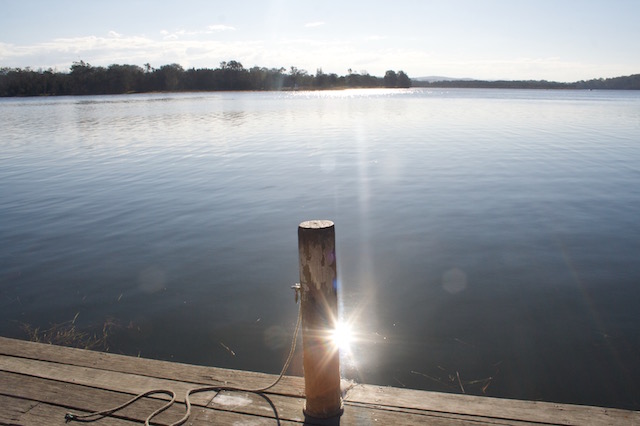
In the southern half of Australia, from June to August is the winter season, and it can be rather chilly to camp outside. Even if the temperatures aren’t too cold, in southern Western Australia its the rainiest time of year.
If you’re wanting warm beach weather, the summer months from December to February are excellent, although late December and January are also peak holiday season (particularly at camp grounds) due to school holidays.
Autumn and Spring are also great times to visit, with Autumn in particular often being quite mild, with temperatures in the mid 20s common through to the end of April. Just keep in mind the Easter long weekend is also a peak holiday season.
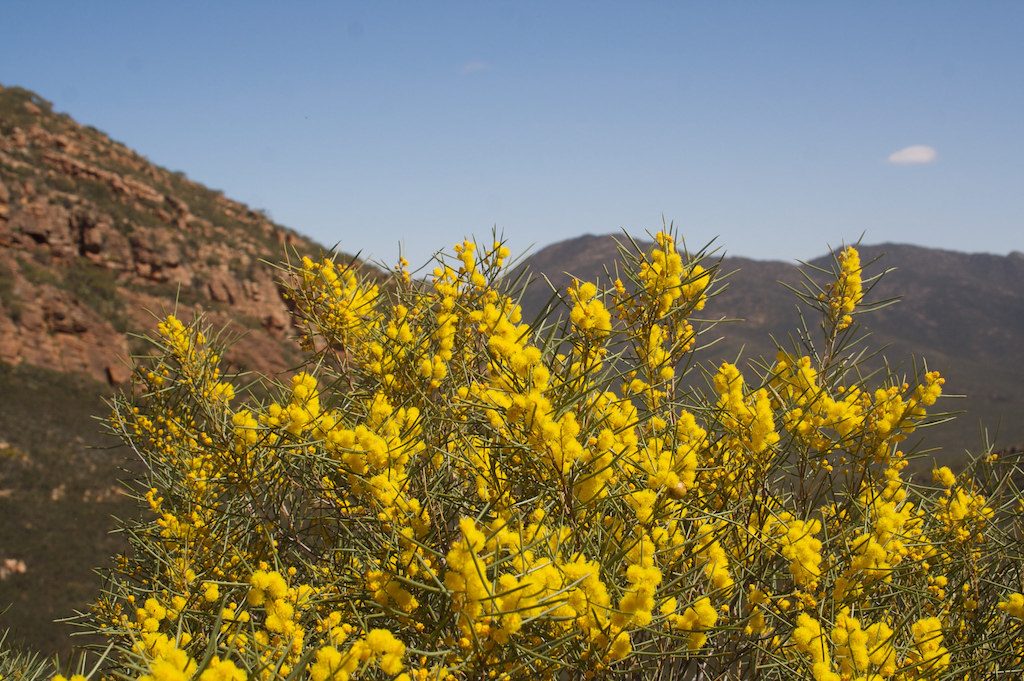
My Recommendation?
If you’re wanting to travel for six months, one option would be to travel through southern Australia from February to April, then head north from May to July. Just keep an eye on the weather further north in case the wet lasts later than usual and roads remain inaccessible.
Camping Around Australia Guide: Camping Sites
There are four main categories of places to camp in Australia: caravan parks, showgrounds, national parks, and free campsites. There are different benefits to each type of camp ground, and you’ll probably end up staying in a combination of all four.
Camping at Caravan Parks
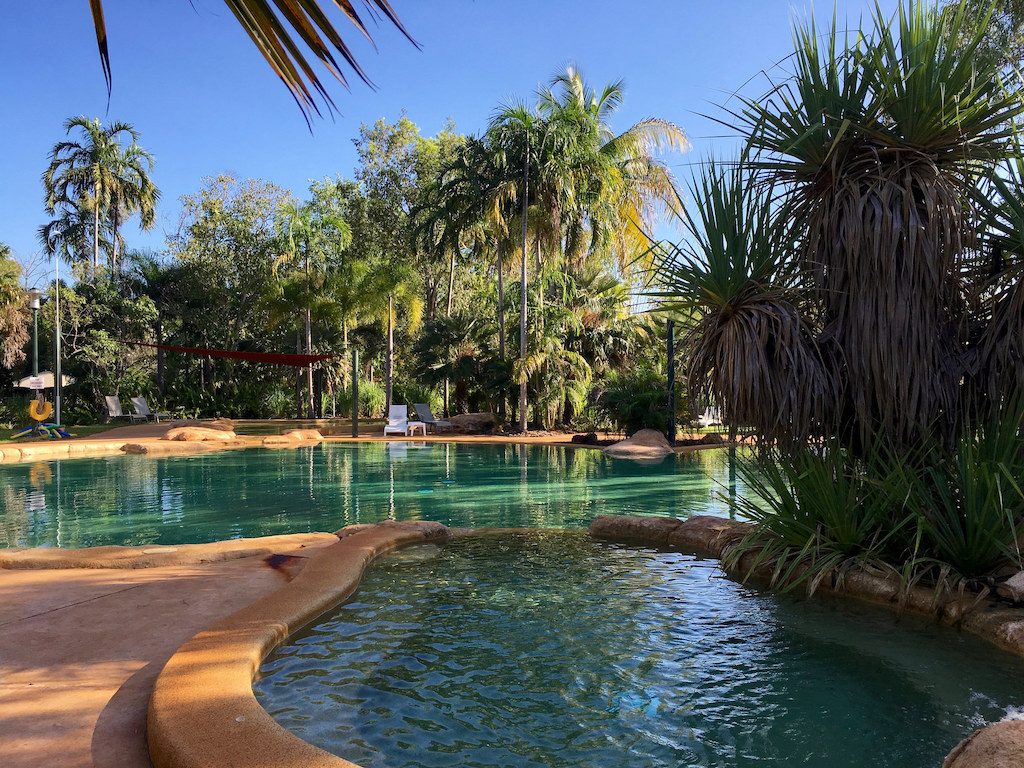
Most decent sized towns and holiday destinations (in particular on the coastline) will have at least one caravan park. An unpowered tent site typically costs around $30 for 2 adults at regular caravan parks, but can be $40+ at fancier parks. Add on at least $5-10 for a powered site.
Even higher peak season rates usually apply between Christmas and New Year and over the Easter long weekend. Peak prices for powered sites at some popular holiday spots can be a shocking $100 per night or more!
Caravan parks increasingly have a camp kitchen area, with stoves, fridges and sinks for the use of campers, although some places just have BBQ facilities. Many have a kiosk with basic groceries, snacks and ice, whilst some parks also have an onsite cafe or casual restaurant.
In case the weather turns bad and camping is just too much, most caravan parks also have budget cabins to stay in, but expect to be charged at least $120 per night.
Camping at Showgrounds
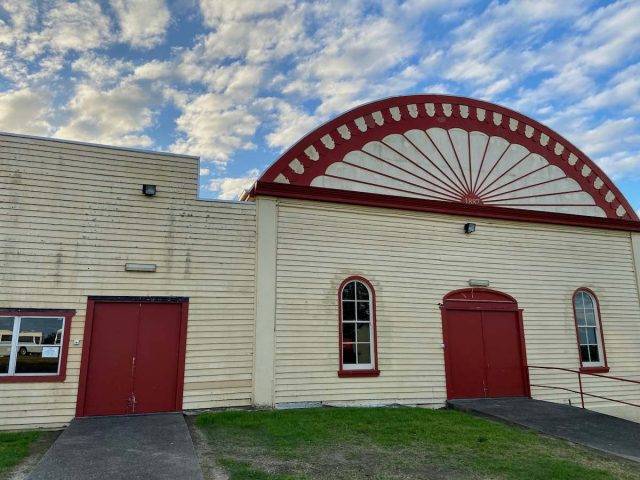
When I was younger, I can’t recall ever camping at showgrounds, but I’ve been a convert on my recent Australian road trips. Most country towns will have a showground, and outside of the annual show and other special events, it functions as a year-round camp ground.
The camp grounds are more basic than typical caravan parks. Don’t expect swimming pools and jumping pillows for the kids. Also, the amenity blocks are generally older and there’s only occasionally a camp kitchen.
However, the camp grounds usually always have power. It’s a great option if you have a campervan or caravan and want something affordable with power, but don’t care about other facilities. They’re usually always pet-friendly, too.
Camping at National Park Camp Sites
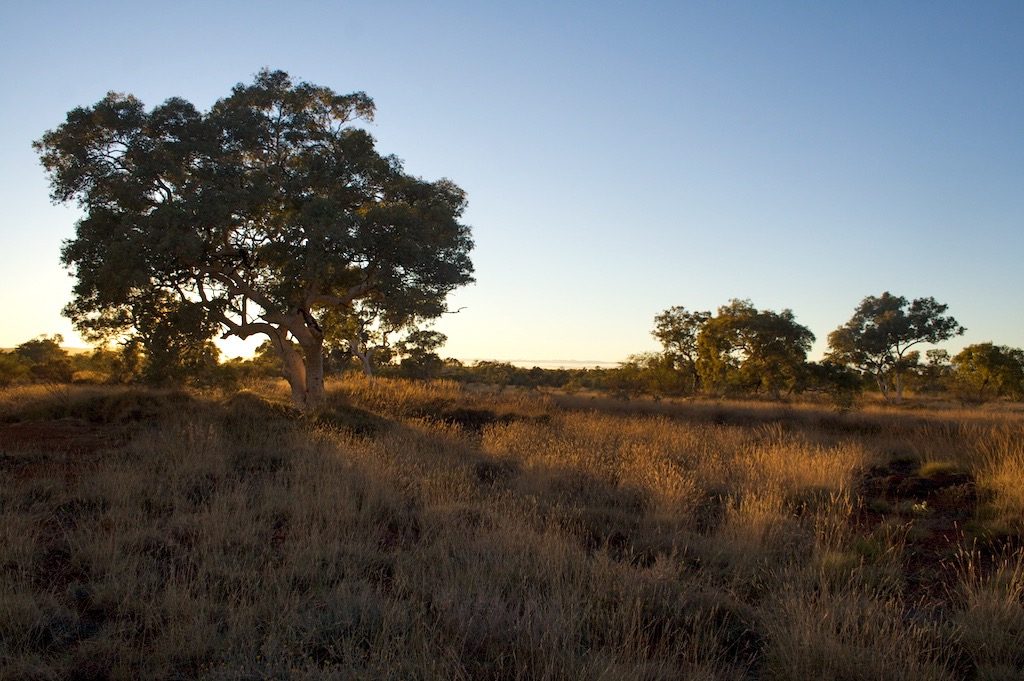
Camping sites in national parks are of variable quality. At the top end, some may be similar in style to regular caravan parks, with a similar level of facilities, and charge $10-15 per adult per night for an unpowered site. At some campsites, powered sites may even be available.
However, the vast majority are more basic, and usually offer only toilets, along with BBQ and picnic facilities. They usually charge around $5-10 per adult per night (with only unpowered sites on offer). Payment may be either at an office, into a collection box, or a ranger may come around once per day.
Finally, some camp sites in national parks are free, usually with no facilities or only toilets (whether flushable or pit).
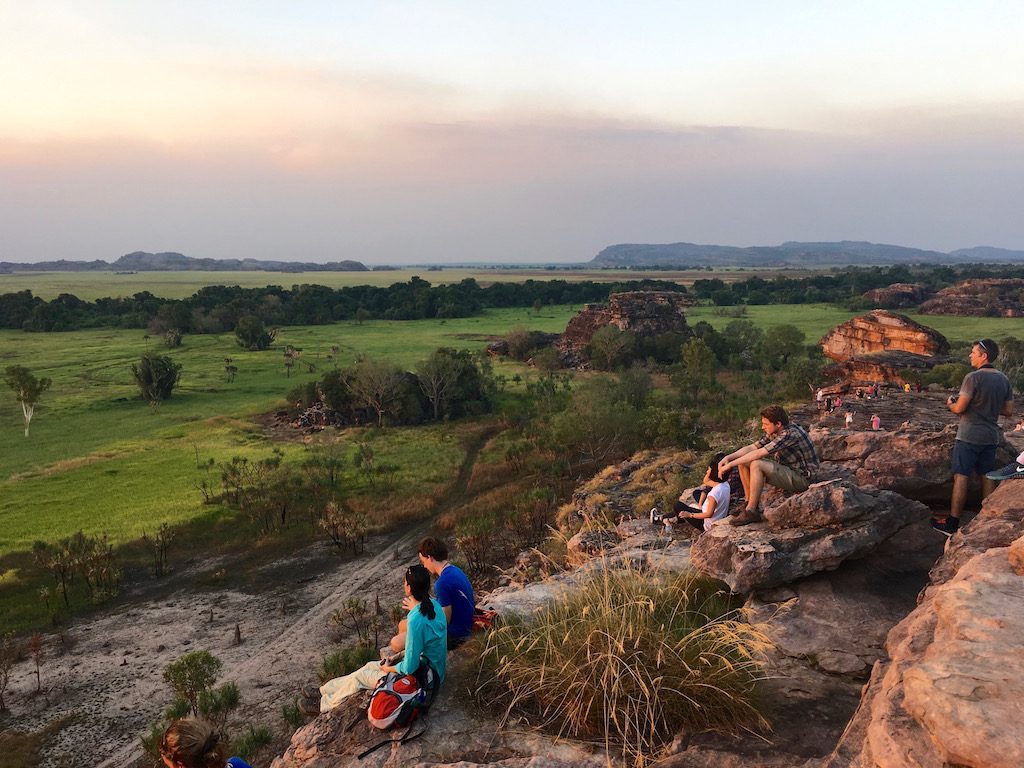
In addition to camping fees, it is worth remembering that national parks may charge entry fees, often $8-15 per day per vehicle, although some parks are more expensive, including Kakadu, Uluru and Cradle Mountain.
In some states, such as Tasmania, it’s worthwhile buying a park pass. Check out the situation on a state-by-state basis.
Not that this really makes staying in national parks more expensive, as you’d usually be paying those fees anyway, even if staying elsewhere, in order to sight see in the national parks.
Camping at Free Camp Sites
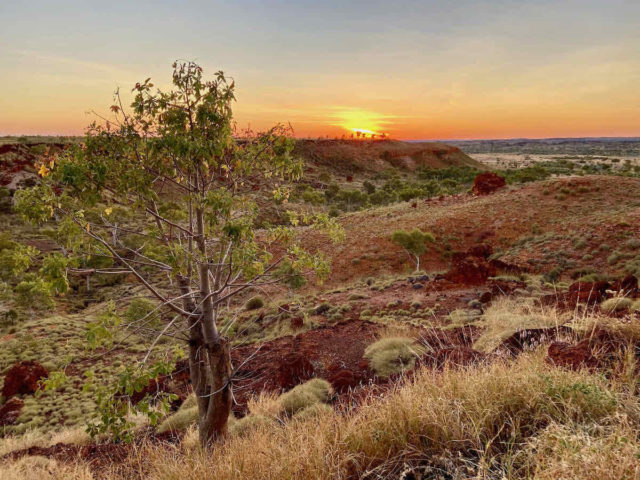
Finally, there are free camping sites outside of national parks, that again usually have no facilities or just toilets. In Western Australia, it is permissible to camp in many roadside rest areas, particularly in remote areas, for a maximum number of hours (sometimes 24 hours, sometimes 72 hours). Check the signage.
Some road houses in remote areas may offer free camping, next to the road house, although the conditions may be rather bleak. Even some less remote hotels and towns offer this option, although often it’s limited to self-contained RVs only.
Other free camping locations are in state forests and other types of reserves. Note that some free campsites request a donation – be generous and leave a contribution!
Finding out about Camp Sites
For any type of camping, particularly if you’re wanting to camp for free, it is a good idea to purchase one or two guide books. Then you will know what options are coming up, ideally along with prices. Often it is impossible to find free camping locations without directions. These are available at most book shops and camping gear stores.
Alternatively, download the WikiCamps Australia app. While there is a charge for the app (around $7.99 depending on device), it is quickly recouped from a single night’s free camping. The app is available for iPhone, Android and Windows PC – see the link for the download links.
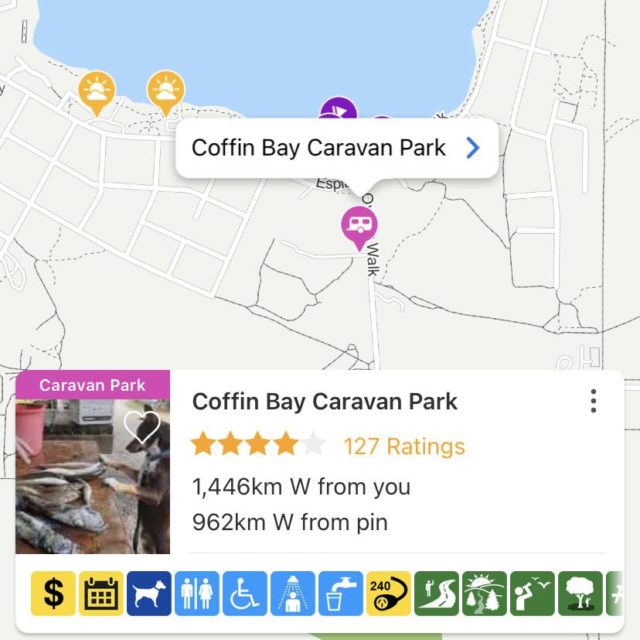
Just keep in mind some remote locations will not have phone or internet access, so I recommend downloading some offline data in advance.
Also remember, you don’t need to commit to camping every night, if you have the budget. It’s nice to break it up occasionally with a night in a hotel or hostel, or by staying in some unique accommodation, such as an underground hotel in Cooper Pedy.
Camping with your dog? Follow my tips on finding dog-friendly camp sites
Camping Around Australia Guide: Choice of Vehicle
You’re going to spending a lot of time in your vehicle travelling around Australia, not to mention it needs to store all your luggage and handle the roads you’re driving on, so vehicle choice is important.
Do You Need a 4WD?
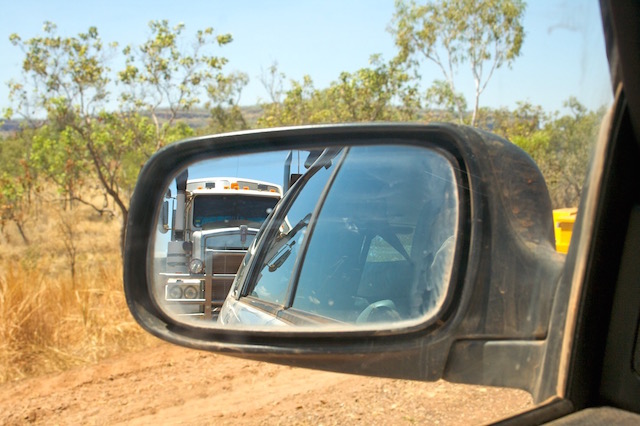
Most roads in Australia don’t require a special vehicle to travel on, with the amount of sealed roads increasing year by year, even in remote locations. It’s possible to travel all the way around Australia just on sealed roads, but it’s good to have something that you can take on unsealed roads leading to some national parks and scenic spots.
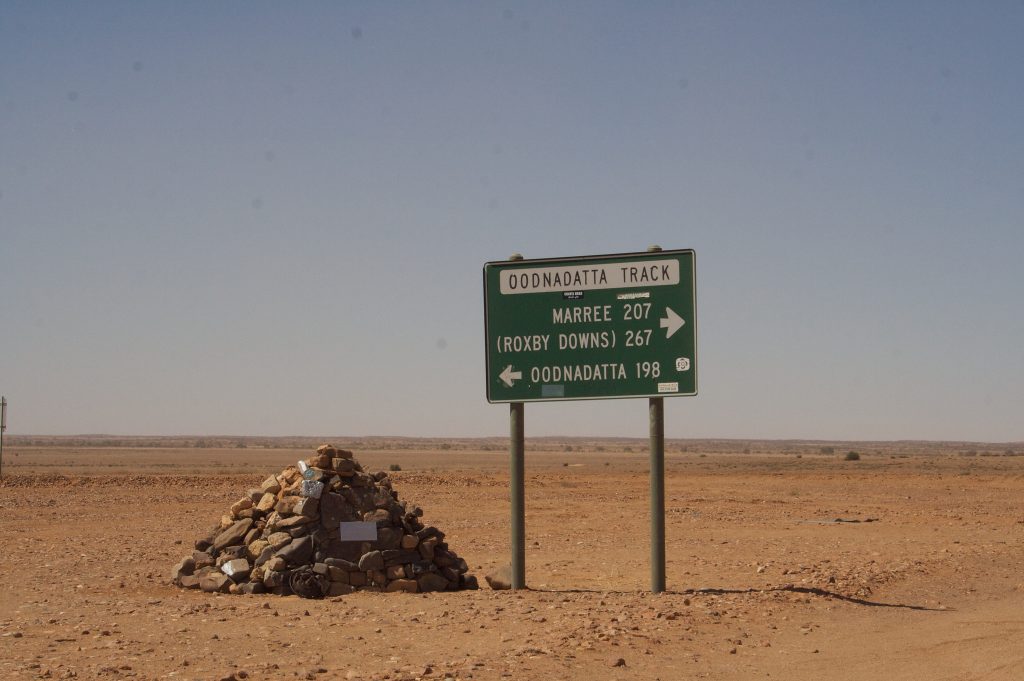
If there’s a chance you’ll drive on unsealed roads, sport cars are definitely ruled out. But most small cars are fine on unsealed roads, as long as it’s not a hire care, with most rental car contracts prohibiting unsealed roads, except to campsites. Mind you, I’ve previously met someone driving along the Oodnadatta Track in a Mini!
There are some 4WD only roads that are great to tour along, such as the Gibb River Road through the Kimberley region. You will require either a larger 4×4 SUV, or at least a decent medium-size SUV, if the road conditions are not too bad (which can vary).
For the greatest access, and early after the end of the wet season, a proper four-wheel drive is a must. This includes if you want to drive all the way to the tip of Cape York, the northernmost spot in Australia.
Maximising Luggage Space
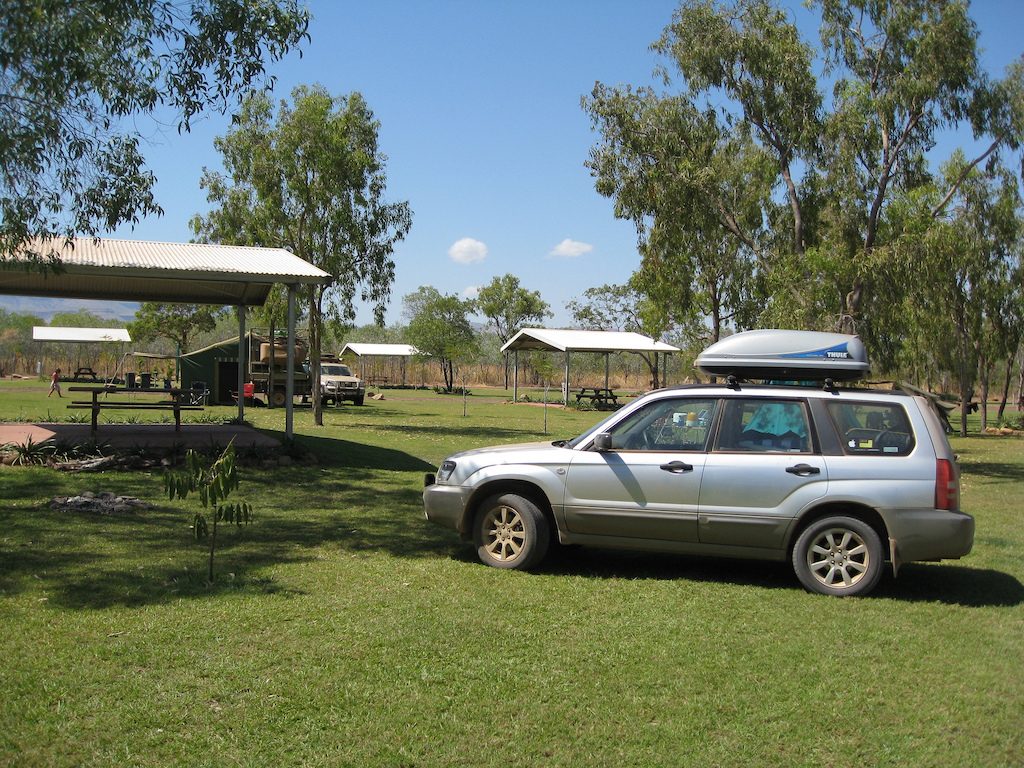
The other main consideration with a vehicle is how much luggage space it has. Ideally there is a large boot, where you can stack boxes with other gear on top. This is where a good sized SUV or 4WD comes in handy. However, if only two people are travelling, there is also the option to use the back seats for stacking gear, in particular clothes and other softer items.
One other option is to buy a roof top box, attached to roof racks. This is particular good for less frequently used items. Although if you’re happy to open it each day, it’s also a handy size for tents and camping gear.
Don’t Forget Mileage
One other thing to keep in mind is the milage of the vehicle. This is one key reason why camping with a regular car is cheaper than with a camper van, particularly a larger sized camper van with poor fuel efficiency.
Vehicles are increasingly being manufactured with higher mileages, with smaller petrol cars such as VW Golfs typically having an open road mileage of 800km from a regular size tank. This can make a difference, in particular reducing the need to fill up in more remote spots with higher fuel prices.
Check out more tips on travelling in Australia by car, from choosing a car to packing.
Camping Around Australia Guide: Camping Gear
The other place where you’ll be spending most of your time is inside your tent. When you’re just away for the weekend, you can get away with skimping on camping gear as you can catch up on sleep at the end of it. But when you’re sleeping in a tent for months on end, carefully choose your camping gear and upgrade if it’s unsatisfactory along the way.
Choice of Tent
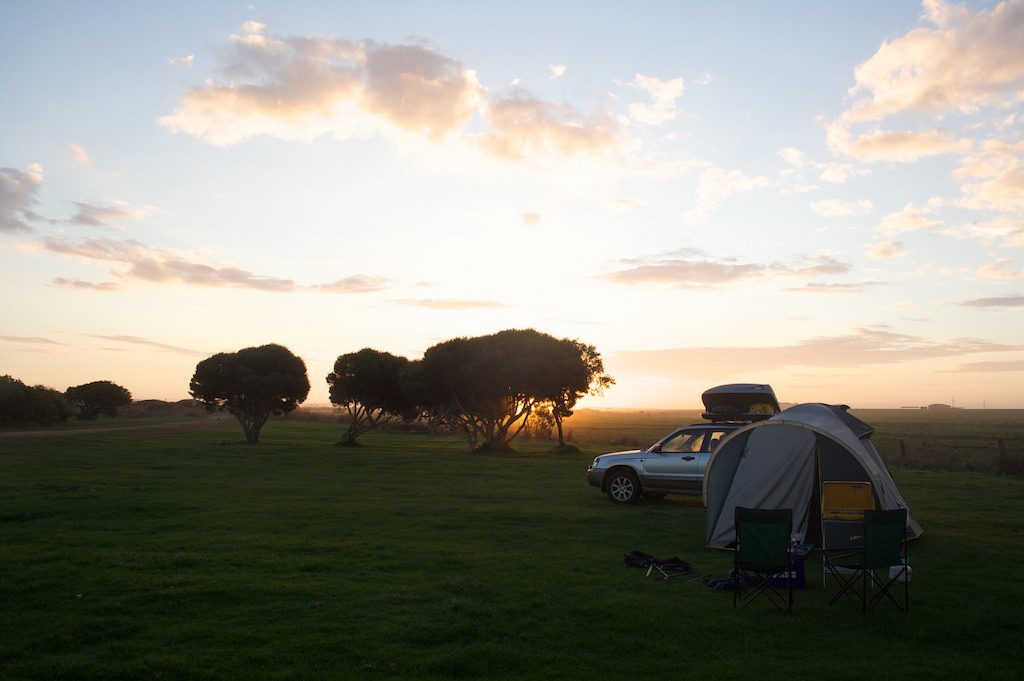
The main consideration for when choosing a tent is how long it will take to put up and take down each time, in particularly if you’re moving location every day or two.
Generally smaller dome tents are quicker, plus there is the option these days for more expensive, semi-automated tents that virtually put themselves up or down.
An additional lightweight backpacking tent is a great option if you want to do some overnight hikes along the way.
Make sure the tent is of decent quality, as it will need to be durable to last three to six months in the elements. However, particularly in northern Australia during the dry season its waterproofing doesn’t actually matter, if it never rains.
To reduce the number of pegs that need to be hammered into the ground (when the ground is hard), I’ve sometimes skipped using the outer fly completely, and just used the inner doom, with its poles and four pegs. It’s also essential not to forget to buy a mallet to use to hammer pegs!
Sleeping Gear
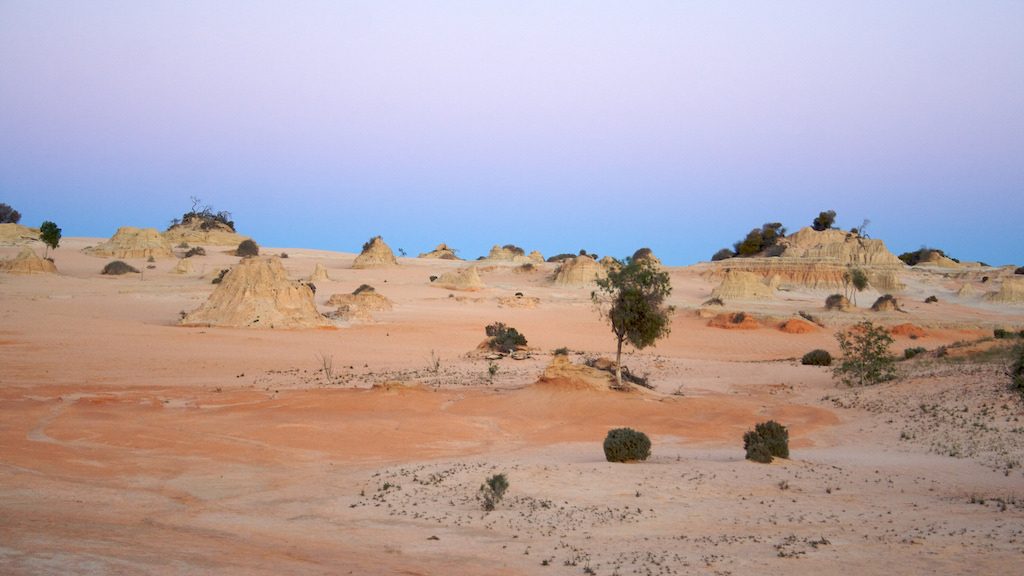
To sleep inside the tent, the main options are self-inflating mats, inflatable air beds and stretchers. I find that for many nights on end, an inflatable air bed is generally the most comfortable, but your choice may differ.
If you do choose an inflatable air bed, get an electric pump to go with it that can be plugged into the cigarette lighter in your car, that will pump up the bed in minutes without any effort on your behalf. I’ve also come across electric pumps that charge via USB port, meaning you don’t need to it connected while pumping your air bed.
The quality of sleeping bag that you need will depend on the outside temperatures. If the weather is generally warm, any sleeping bag will do. Otherwise aim for a sleeping bag that is rated down to somewhere between 0C and 5C.
As you will be sleeping in it every night, a separate sleeping bag liner or sleep sheet that can be washed each week is a must.
Finally, pillows plus two sets of pillow cases will add to your comfort levels, plus one or more torches are essential for lighting (both inside, and for late night trips to the toilet block).
Camping Around Australia Guide: What Else to Pack
As well as camping gear, you will probably need to take most of the following.
Esky or Fridge
It’s possible to buy a compact camping fridge and leave it running in your car off a combination of your car battery and gas bottles. If you’re not wanting to splurge on the cost of a fridge, or don’t have much room, a tropical esky is a good alternative.
More heavy duty than a regular esky, fill it with multiple juice or soft drink bottles filled with frozen water (keep an eye for freezers in camp kitchens along the way) or buy solid ice. It will then stay cold for at least 5 days in cooler temperatures, 3 days in warm temperatures.
Cooking Gear
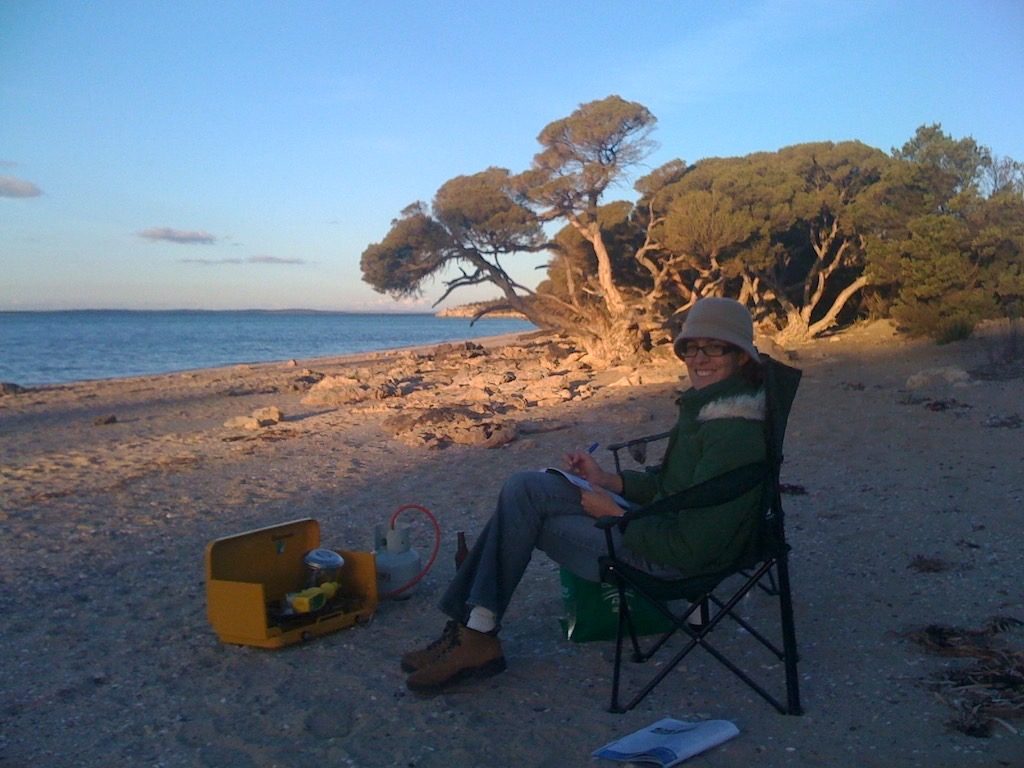
A 2-burner camp stove with a small gas bottle should be enough for the cooking needs for two people, for a family a larger stove or second cooking surface will probably be required. (Also keep in mind that if a camp kitchen or BBQ facilities are provided, this may not be needed every night.)
Add a couple of billies, at least one frying pan and a gas lighter for cooking. Buy a plastic box (ideally with a lid for stacking) to keep all cooking equipment except for the stove and eating utensils in. Also buy a second box to keep non-fridgerated food in.
Mobile Phone and Charger
Ensure at least one of the mobile phones you take is with Telstra, as the coverage of other carriers is not as extensive. (There’s a joke that in remote areas Telstra has a monopoly: either use a Telstra mobile phone or a Telstra pay phone.) Although remember there still isn’t mobile phone coverage everywhere in Australia.
Get a car charger for the phone, plus for any other electrical equipment you have (such as tablets). (Devices can be bought to charge laptops off car batteries, but it may be easier to conserve battery power except for where you have access to power points in camp kitchens.)
Clothes
Go light on packing clothes, as outside of capital cities in Australia it’s very casual. For footwear, it’s best to pack at least one pair of hiking boots (or something else that is comfortable for walking and doesn’t show the dust) and a pair of thongs, perhaps something else to wear out, though don’t feel you need to.
Jeans also make a great choice, unless it’s too hot, as they don’t show the dirt as much. Most caravan parks offer washing machines, dryers and clothes lines, for about $4-5 a load.
Water
Make sure you have plenty of water, particularly if you’re going to remote places. If you’re about to head somewhere remote, it’s a good idea to buy one or two large containers of water that can be stowed away as emergency supplies.
Breakdown Equipment
Ensure you have a proper spare tyre, not just a space saver, plus a jack, wheel brace and that you know how to change a tyre. An old or cheap picnic blanket is also handy for unloading everything from the boot to reach the spare.
If you’re heading to the Pilbara region of Western Australia, inland from Karratha, it might even be better to have two spares, as the sharp rocks are terrible to puncturing tyres. Before you go, also have your vehicle serviced and ask your mechanic if they recommend any spare parts.
Your Dog?
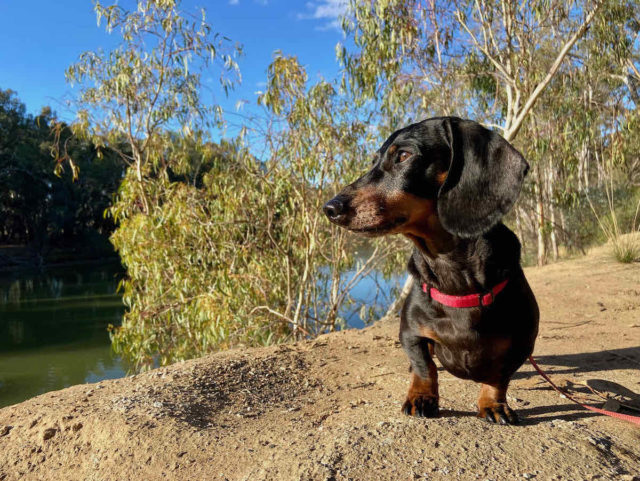
It can be a tricky decision whether to bring your dog along when travelling around Australia. Travelling with a dog rules out visiting Australia’s many national parks (unless you can leave them in a kennel or with a sitter), plus will limit the places that you can camp.
However, for most people their dog is part of the family, and many people make it work, with some extra effort and a few sacrifices. For more tips, check out my guide to doing a Lap around Australia with a dog.
You May Also Like
- How to Go Camping with Your Dogs in Australia
- How to Hire a Pet-Friendly Campervan in Australia
- How to Keep Your Dog Safe While Travelling in Australia
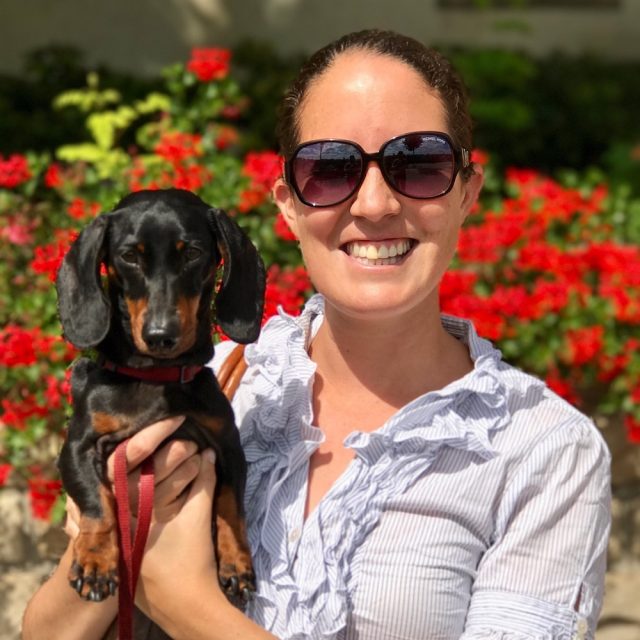
Shandos Cleaver is the founder of Travelnuity: Dog-Friendly Travel. She has travelled extensively with her Miniature Dachshund, Schnitzel, including to 33 countries across Europe, every state and territory of Australia except Tasmania, and 10 of the United States. She’s passionate about providing inspiration and information to others wanting to travel with their dogs, whether close to home or internationally.
Inspired? Pin this to your Pinterest board!
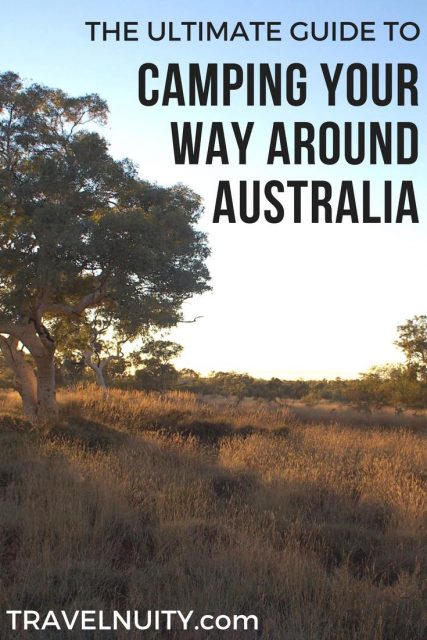

Great post, thank you for sharing!
Thanks Olivia!
Very helpful and concise!
Thanks Gary! Have a great time travelling in Australia!
Just on the issues of water and clothing:
Some remote (and not so remote!) have dreadful water. Consider adding water purifier to your tank water and a filter jug or inline filter to make it safe and palatable. Otherwise, take ample clean water for drinking and use the tank water for washing, etc.
Clothing that protects you from sun, ticks, the sharp sclerosed plants and thorns that dominate much of the bush is essential. Shorts and thongs are OK at camp and showering, but they present some dangers by offering little protection. Light materials that wash and dry quickly and resist creasing, are best.
Gary – Thanks for the tips! I agree on protective clothing. I’m a fan of using hiking boots when camping and in the outback – great protection and they don’t show the red dust.
Thanks for the tips on camping your way around Australia. I like that you said that A more do-able option to be able to camp all around Australia is to either drive a caravan, campervan or camp. My husband and I are thinking about driving a caravan around Australia and I think it would be smart for us to look up the different caravan parks that we can stop at so we can plan out our trip better.
Outside of peak season (Christmas, Easter, other long weekends), I generally find you don’t need to book in advance at caravan parks (except for a few locations, such as Broome, Exmouth). That way you can stay flexible and decide from day to day where you want to go.
Lovely photos 🙂
Thanks Charmaine!
It was good to know that some tourist spots in Australia have caravan parks. My sister and I are planning to visit and go camping in Australia for Christmas break. I think a caravan park would be a good option for us because they often have a kitchen area or BBQ facility, so we could make our own food.
I have dreamt of going around Australia with a camper van and visit camping sites around together with the kids, until Covid happened. We are supposed to start it mid 2020 but was forced to a halt. Hope this pandemic comes to an end so that I can safely take my family with me in this exciting journey. Until then,,,,, I am just go and read some interesting post like this online. Thanks for this Shandos 🙂
I think 2020 put a lot of plans like that on hold! Fingers crossed you can head off this year.
Hoping that it would happen this year. Thanks Shandos
most intelligent, comprehensive and simple webpage about camping in Australia I have found in my search of preparing my trip
Thanks Patrick! Some of my earliest memories are of camping with my family, so I have plenty of experience.